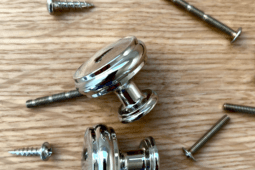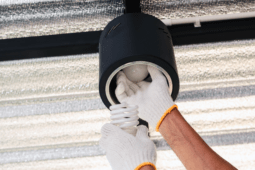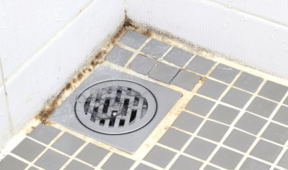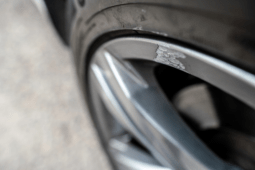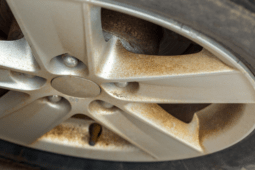7 Ways to Clean a Garbage Disposal + Best Maintenance Tips!
Cleaning up after meals and cooking has never been easier if you’re lucky enough to have a garbage disposal, and if you have this amazing kitchen utility, you know that there are certain things you should never put down your garbage disposal — meat and spaghetti, for example.
Your garbage disposal can assist in cleaning up those lingering scraps of food from your dirty plates in the sink; if you have one, you won’t go back to the days of not.
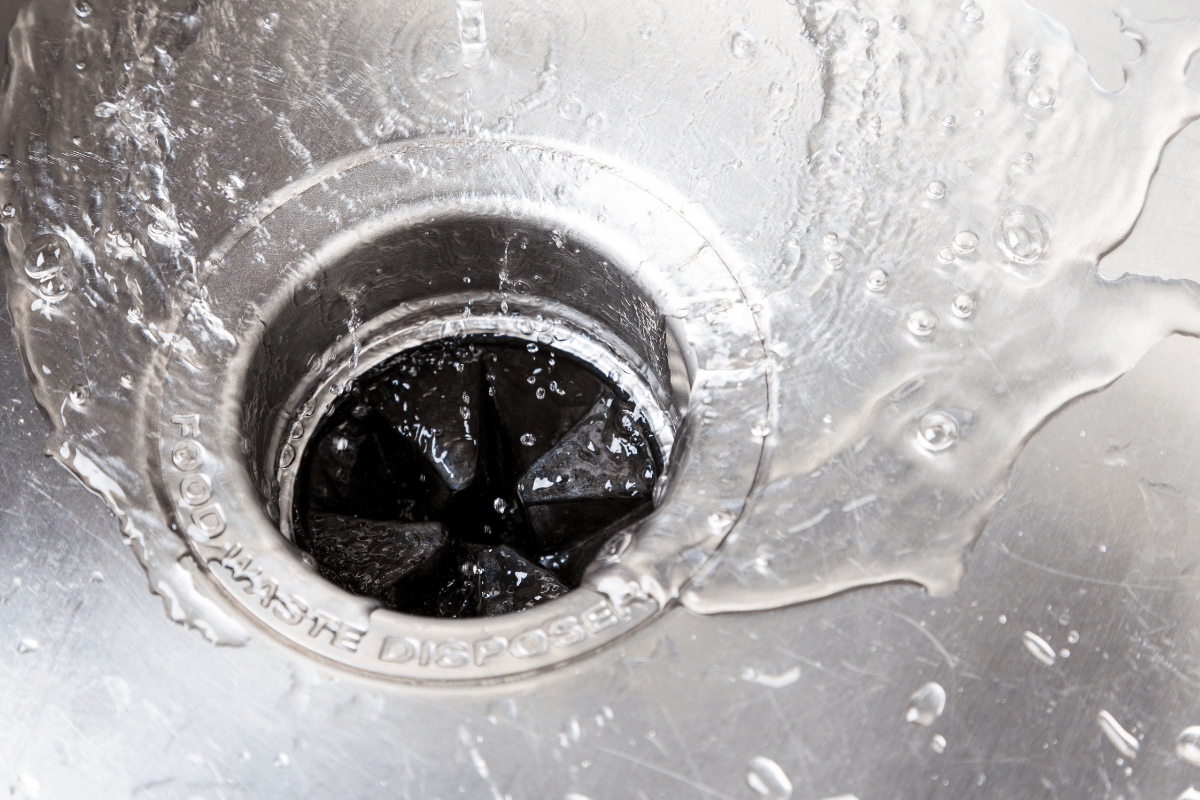
But every once in a while, an erring piece of food or debris can get caught in your garbage disposal and smell up your kitchen which is less than ideal so it’s important to cleanse your garbage disposal regularly to keep it maintained, free of unwanted odors and functioning as it should.
This article will cover all the ins and outs of owning a garbage disposal, as well as when and how often you should clean it. Hopefully, this will help to keep your garbage disposal working and in fine order!
How Do Garbage Disposals Work?
A garbage disposal is mounted to the underside of a kitchen sink and connected to the drain. Whenever you do any food prep in the sink, like rinsing fruits and vegetables, washing dishes, or even scraping your plate into the drain opening, the food waste collects into a grinding chamber.
When the garbage disposal is turned on, a spinning disc with metal lugs forces food particles against the lower walls of the chamber, which is lined with a grind ring that crushes the scraps into pulp. The running water — hopefully, you are running the water when you use the disposal — washes the liquified food down the drain.
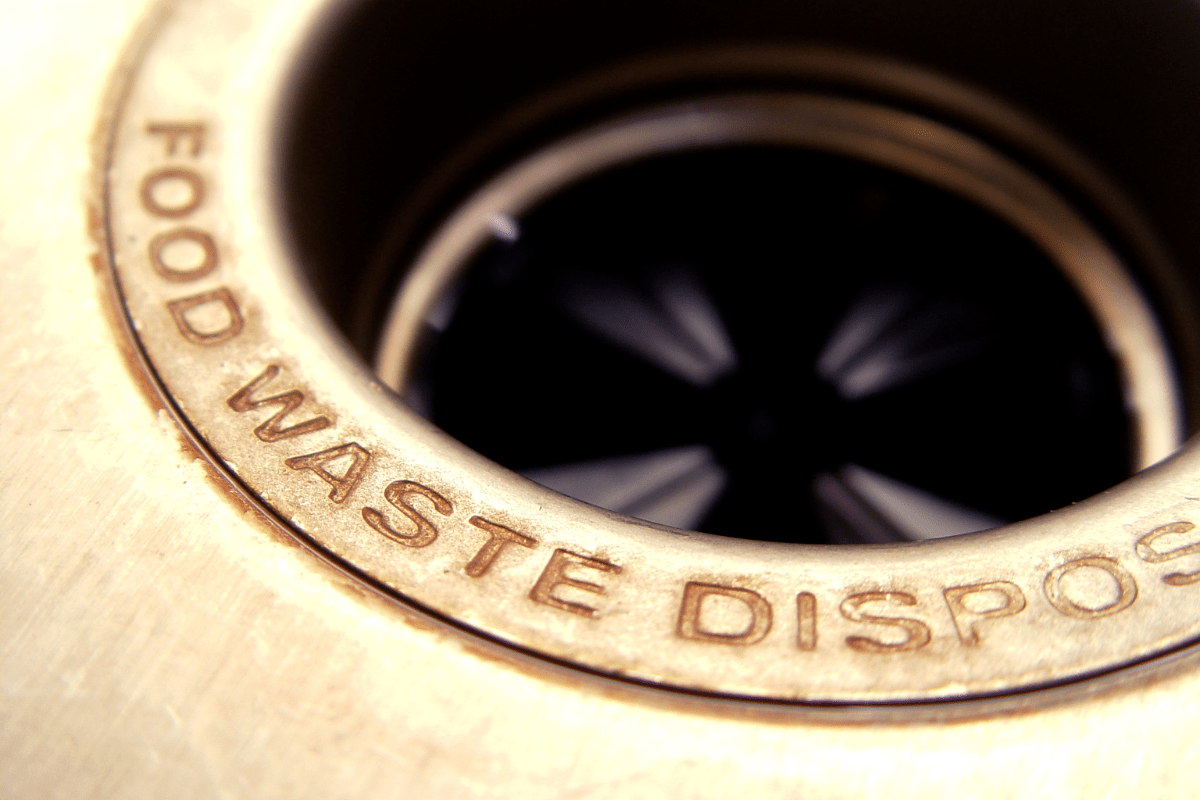
Why Do You Need To Clean a Garbage Disposal?
Garbage disposals can get dirty and smell when bits and pieces of the waste they attempt to pulverize get stuck. If your garbage disposal is dirty and starts to smell, there’s a fair chance that the dirtiness is from food particles. These food particles will decay and rot and can become a breeding ground for bacteria.
This bacteria will give off a bad odor, but it can also put your health at risk, especially over time, if you’re not cleaning your garbage disposal habitually. This bacteria can contaminate surfaces and become a hazard to healthy breathing and living conditions, so it’s worth regularly cleansing your garbage disposal to avoid the risk of bacteria buildup.
Giving a garbage disposal a serious deep clean can also help you target those hard-to-reach areas. Cleaning your garbage disposal helps release a lot of the particles building up in the nooks and crevices of the garbage disposal and drain. This eliminates potential breeding grounds for bacteria and germs and helps decrease clogged kitchen sink drains.
While some garbage disposal smells emanate from the chamber, most of the odor comes from food that builds up and rots on and around the rubber flange, which is the flappy black rubber splash guard that fits inside the drain hole.
If you’re worried about forgetting to clean your garbage disposal, a handy tip is to mark it on your calendar just like you would with any other appointment.
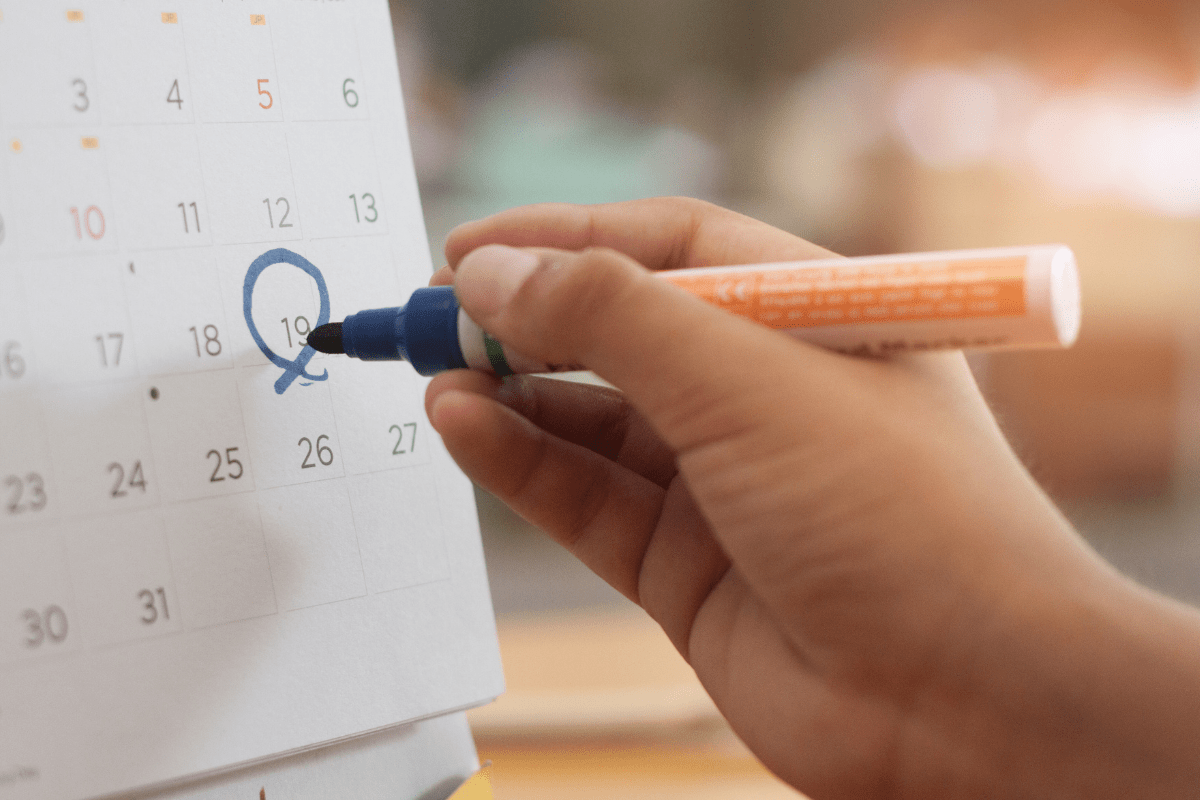
How Often Do I Need to Clean My Garbage Disposal?
You should clean your garbage disposal once a week or at least once every two weeks. If you make it part of your biweekly cleaning routine you are less likely to forget. You also want to ensure that you always run cold water when using the garbage disposal because cold water solidifies food and makes it easier to grind. You should also pour a pot of boiling water through the empty disposal once a month to remove any leftover debris and give it a real deep cleaning.
What Can I Put Down My Garbage Disposal?
Although a garbage disposal can handle lots of different foods its paramount to understand that it is not a trash can.
Here are some food items that you should never put down your garbage disposal:
- Grease and cooking oil
- Corn husks
- Eggshells
- Coffee grounds
- Raw meat
- Bones
- Banana peels
- Any kind of dough
- Shrimp shells
- Watermelon rinds
- Nuts and Seeds
- Non-food items
Settling the Eggshell and Coffee Ground Debate: Some plumbers say that you should avoid putting egg shells and coffee grounds down the garbage disposal, while others argue the exact opposite – that egg shells help sharpen and clean the garbage disposal unit and the coffee grounds help eliminate odors.
While this may be true, it is also true that eggshell membranes and coffee grounds can clog your drains and pipes, particularly if you have a septic tank. It’s best to err on the side of caution and avoid putting eggshells and coffee grounds in the disposal. You can also check your user manual and see what the manufacturer advises.
How to Properly Use a Garbage Disposal
If you think that using a garbage disposal is as simple as just flipping a switch, there are some important things you need to know. It’s always recommended to use cold water while running the garbage disposal, as hot water may liquify fat or grease, allowing it to flow easily—until it reaches the drain, where it will harden and lead to clogs. Also, using no water at all may also lead to a clog.
If you accidentally send oily scraps down the drain or wash a pan with animal fats accumulated on it, you may want to consider using a little dish soap to assist with the process. Biodegradable dish soap can help to break up cooking oils and other types of fats so that they can pass through the system and improve the efficiency and lifespan of your disposal.
So now that we have covered all the ins and outs, let’s get to some helpful cleaning methods you can try.
Warning: Be absolutely certain that you have turned off the fuse that supplies power to the garbage disposal before putting your hands anywhere near it. There are very sharp blades down there; if it accidentally turns on when you try to clean it out, you could sustain a serious injury.
7 Best Ways to Clean Your Garbage Disposal
1. Baking Soda and Vinegar
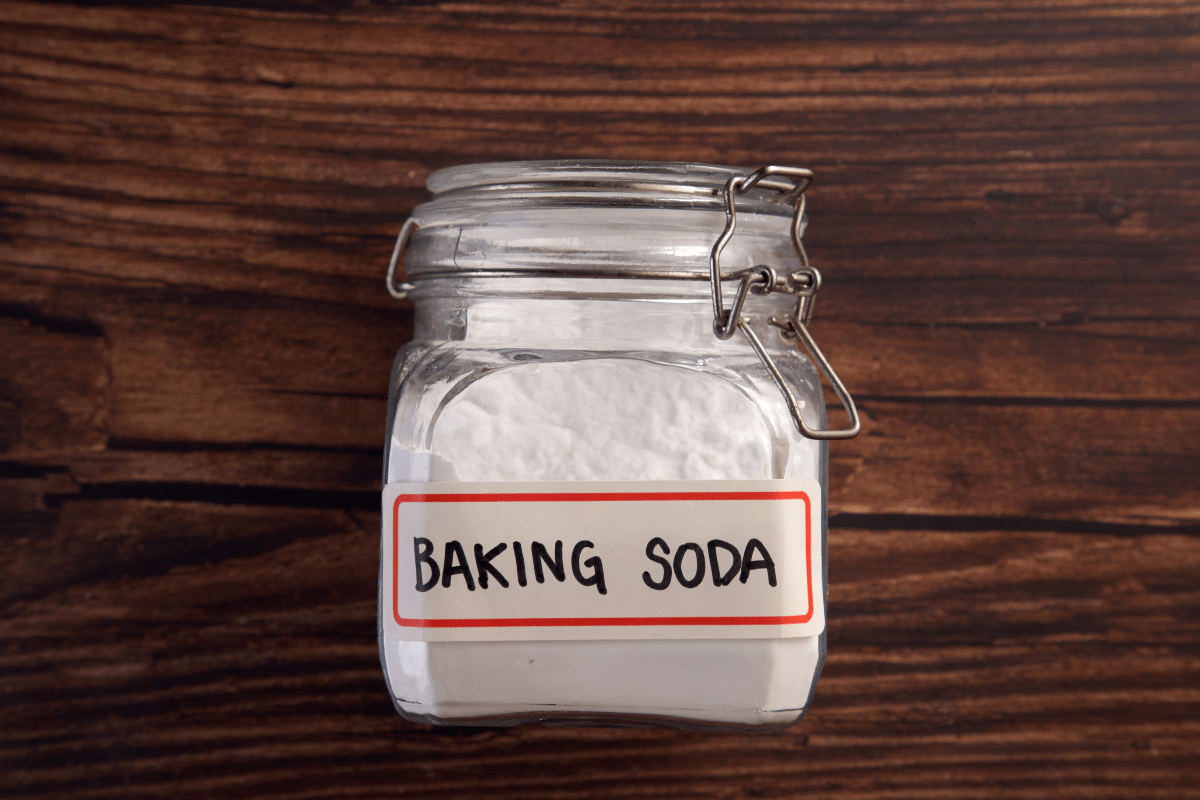
- Step 1: Turn off your garbage disposal and then clean the splash guard with a sponge and dish soap to eliminate any food particles.
- Step 2: Pour 1/2 cup of baking soda down the drain, followed by 1/2 cup of white vinegar, and then allow it to fizzle for around 15-30 minutes.
- Step 3: Flush the drain with hot water
- Step 4: To fully flush things out, heat water on the stove or in a kettle just before it boils, dump it down all at once, and then follow it by turning the hot water tap on for a minute.
2. Ice Cubes and Salt
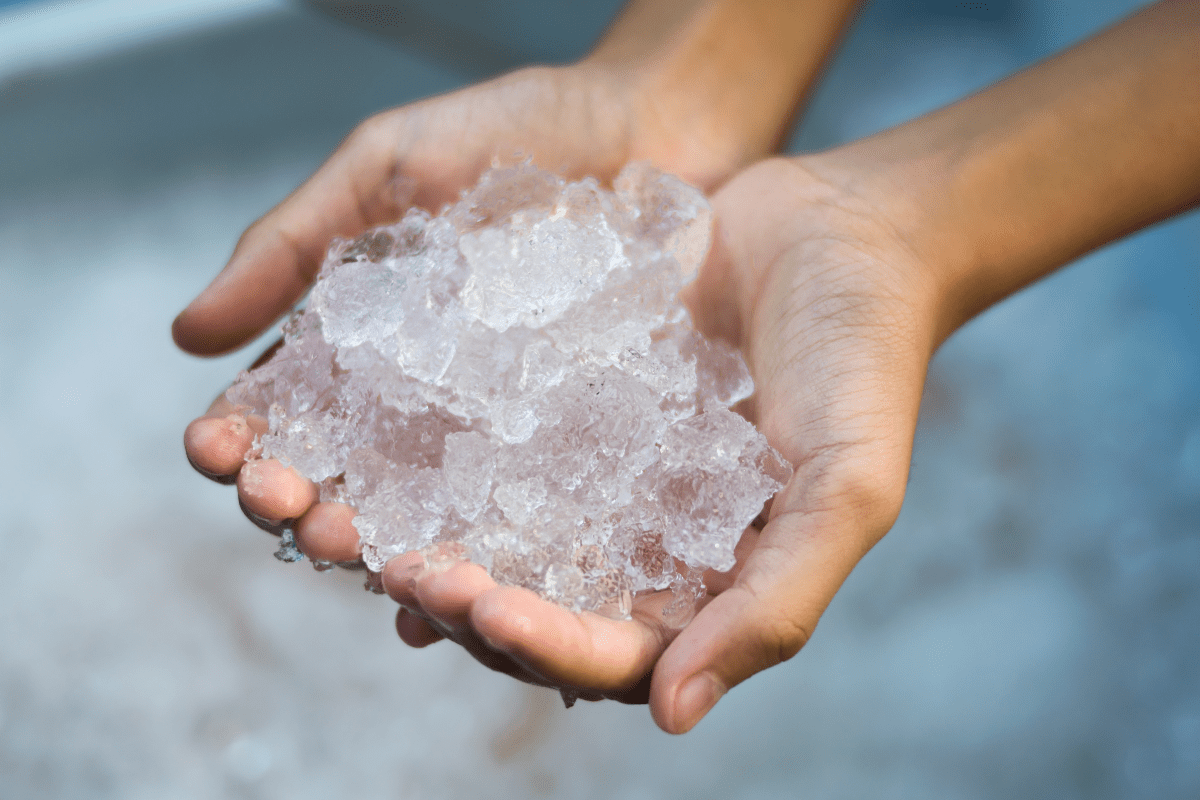
- Step 1: Turn off your garbage disposal and then clean the splash guard with a sponge and dish soap to eliminate any food particles.
- Step 2: Pour two cups of ice into the disposal.
- Step 3: Add a cup of salt into the disposal — ideally, you will want to use rock salt, but table salt can also yield good results.
- Step 4: Run the cold water, turn on the garbage disposal, and let it run until the ice is ground up.
- Step 5: Turn off the disposal, and let the water run for 10 more seconds.
Additional tip: You can add a cup of citrus peel to the ice and salt, and this will help with rot and mold as well it will be a powerhouse of a scrubber with a fresh, crisp scent.
3. Ice Cubes and Vinegar
If you don’t have rock salt or prefer vinegar, you can follow the same steps above but replace the salt with white vinegar. Alternatively, you could also use salt and vinegar with the ice cubes.
You can also use this method as a follow-up to the baking soda and vinegar technique for an extra boost.
4. Oxygen Bleach
To clean and deodorize your garbage disposal, you can use oxygen bleach. Oxygen bleach is a chlorine-free bleaching solution made of sodium percarbonate, a compound of natural crystals and hydrogen peroxide. Since it is chlorine-free, it offers many benefits that cleaning with regular bleach — most importantly, it doesn’t have that strong odor.
Oxygen bleach is a plant-derived product that cleans without irritating your skin, ruining your clothing, and damaging surfaces in your home.
- Step 1: Turn off your garbage disposal and then clean the splash guard with a sponge and dish soap to eliminate any food particles.
- Step 2: Pour a solution of 1/3 cup of oxygen bleach mixed with 2/3 cup of hot water into the disposal.
- Step 3: Flush with hot water for several seconds
5. Citrus Peel
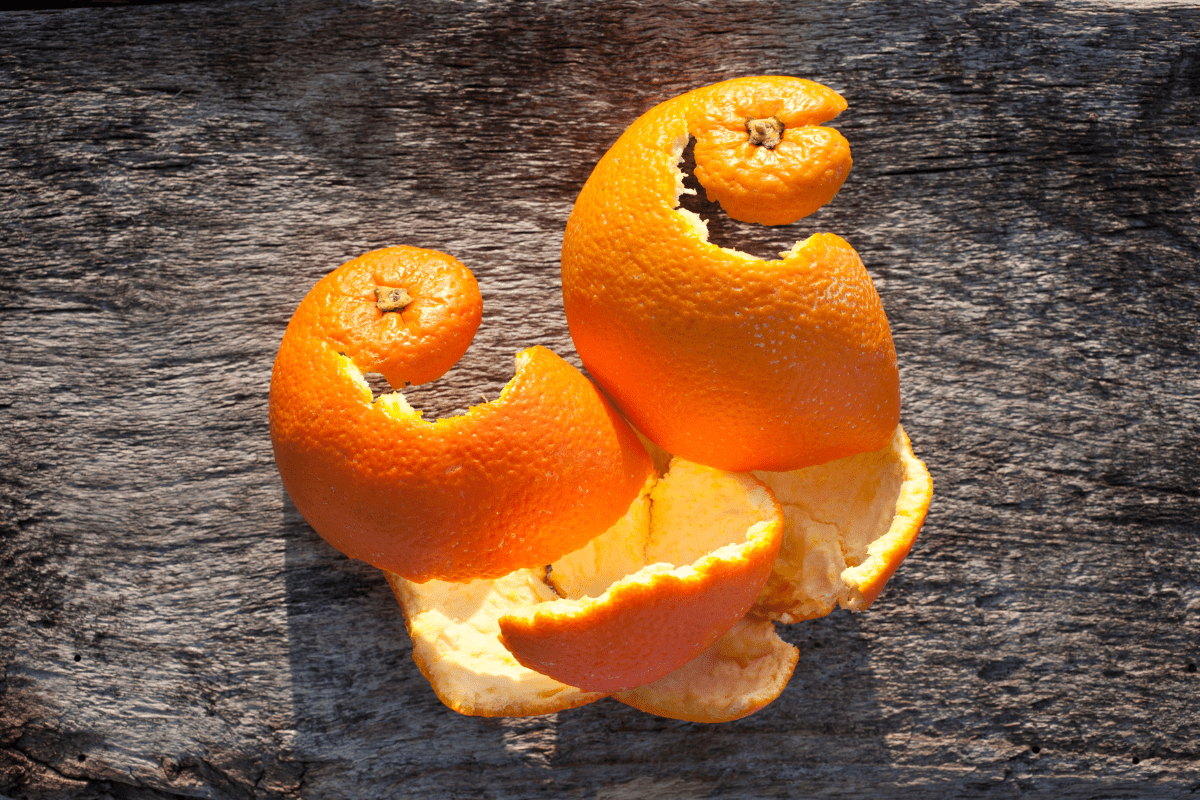
- Step 1:Turn off your garbage disposal and then clean the splash guard with a sponge and dish soap to eliminate any food particles.
- Step 2: Stuff 1 cup of lemon or other citrus peels down the hole.
- Step 3: Turn on the cold water, then turn on the disposal, and let it run until you no longer hear the grinding of citrus peel.
- Step 4: Turn off the disposal, and let the water run for 10 more seconds.
6. Borax
Borax is a safe and natural cleaning product that effectively cleans garbage disposals and minimizes odors.
- Step 1: Turn off your garbage disposal and then clean the splash guard with a sponge and dish soap to eliminate any food particles.
- Step 2: Put 3 or 4 tablespoons of Borax into the garbage disposal and allow it to sit for about an hour.
- Step 3: After an hour, flush away with hot water.
An In-Depth Deep Cleaning
If it has been some time since you cleaned your garbage disposal, a deep clean may be a good idea. It’s also a good idea to do this type of in-depth deep clean maybe once a month to keep your garbage disposal in a high functioning, efficient state.
- Step 1: Turn the garbage disposal off and disconnect it from its power source. Test the power switch to be sure there is no power to the disposal.
- Step 2: Shine a flashlight down the drain and ensure there are no objects trapped in the disposal grinder. Use tongs or long-nosed pliers to remove the object if you see any blockages.
- Step 3: Reconnect the disposal. Then, plug the sink and fill it halfway with hot water. Then pull the plug and turn on the disposal until all of the water flushes through.
- Step 4: Turn off the disposal and disconnect the power again.
- Step 5: Use a long-handled scrub brush with a narrow head or an old toothbrush to clean inside the disposal. Wet the brush head with warm water and add a small amount of grease-cutting dish soap. Move the brush around to reach all the surfaces inside the disposal. Remove the brush, reconnect the disposal and flush again with hot water, as described.
- Step 6: Pour two cups of ice and one cup of rock salt or vinegar into the disposal.
- Step 7: Turn on the garbage disposal and turn on the cold-water tap, allowing the water to run while the salt and ice cubes are ground.
Fresh Smelling Hack
A speedy and easy way to deodorize your garbage disposal is to add a little lemon juice for a fresh, fruity scent. If you freeze some lemon juice in ice cube trays, you can give your garbage disposal an extra cleaning boost.
Once your ice cubes are completely frozen, you can simply put a handful of ice cubes into your kitchen drain and turn on the garbage disposal. This will sharpen the blades of your disposal and leave your drain smelling great!
Maintenance Tips to Keep Garbage Disposal Running Efficiently
To keep your garbage disposal running smoothly, follow these tips:
- Don’t try to grind a lot of food waste at once. Keep it to one cup of food at a time.
- Know what shouldn’t go into a garbage disposal, such as large pits, coffee grounds, stringy vegetables, and bones.
- Avoid pouring cooking grease and oil down the drain, as it can harden and clog the disposal.
- Run cold water when using your garbage disposal to thoroughly flush out the food waste.
- Run the disposal until you no longer hear it breaking up any food—and then keep it running just a few seconds longer to allow it to clear small food particles.
- Cut the big slices of vegetables or fruits into tiny pieces before letting them run through your garbage disposal.
- Avoid letting people operate your garbage disposal that don’t know how to operate it properly.
Frequently Asked Questions (FAQs)
How do I make sure I don’t overload my garbage disposal?
Overloading your garbage disposal can clog or jam it, causing substantial damage. In order to prevent this, grind no more than about 1 cup of food debris at a time.
Can I pour bleach down my garbage disposal?
It is not OK to pour straight bleach down a garbage disposal, as it’s a strong chemical that can eat away at the disposal components. Rather than bleach, you can use oxygen bleach. It’s plant-based and will not damage your garbage disposal.
Is a garbage disposal easy to install?
Installing a garbage disposal is fairly straightforward but does require some very basic plumbing and electrical wiring skills. Most handy-ish homeowners can install a new disposal in a few hours.
How hard is a garbage disposal to remove?
Removing a garbage disposal is required if you are going to replace a sink or a failed garbage disposal. With many disposal models, you can quickly release the motor unit from the sink assembly and set it aside to simplify the rest of the disassembly and removal.
How long do garbage disposals last?
Garbage disposals generally last between eight to 12 years. To get the longest lifespan for your garbage disposal, use it as directed by the manufacturer and ensure that you are cleaning it regularly.
How do you get the smelly odors out of your garbage disposal?
Lemons, and other citrus fruits, such as limes and oranges, are a great way to get rid of those unwanted, smelly odors in your garbage disposal. Cut the fruit up into wedges, place them in the disposal, and run it.
Can I use chemical cleaners in my garbage disposal?
You should avoid using commercial garbage disposal cleaners. Many don’t do much to clean residue, and some contain corrosive chemicals that can damage the disposal’s metal components. You should also never put lye or chemical drain cleaners into a garbage disposal.

